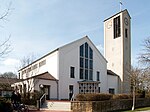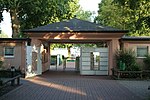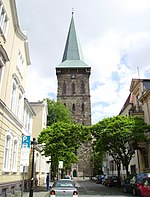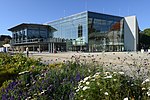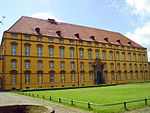Osnabrück-Sutthausen station
Buildings and structures in OsnabrückLower Saxony railway station stubsPages with no open date in Infobox stationRailway stations in Lower Saxony
Osnabrück-Sutthausen is a railway station located in Osnabrück, Germany. The station is on the Osnabrück–Brackwede railway. The train services are operated by NordWestBahn.
Excerpt from the Wikipedia article Osnabrück-Sutthausen station (License: CC BY-SA 3.0, Authors).Osnabrück-Sutthausen station
Am Sutthauser Bahnhof, Osnabrück Sutthausen
Geographical coordinates (GPS) Address External links Nearby Places Show on map
Geographical coordinates (GPS)
| Latitude | Longitude |
|---|---|
| N 52.2319 ° | E 8.0213 ° |
Address
Osnabrück-Sutthausen
Am Sutthauser Bahnhof
49082 Osnabrück, Sutthausen
Lower Saxony, Germany
Open on Google Maps
